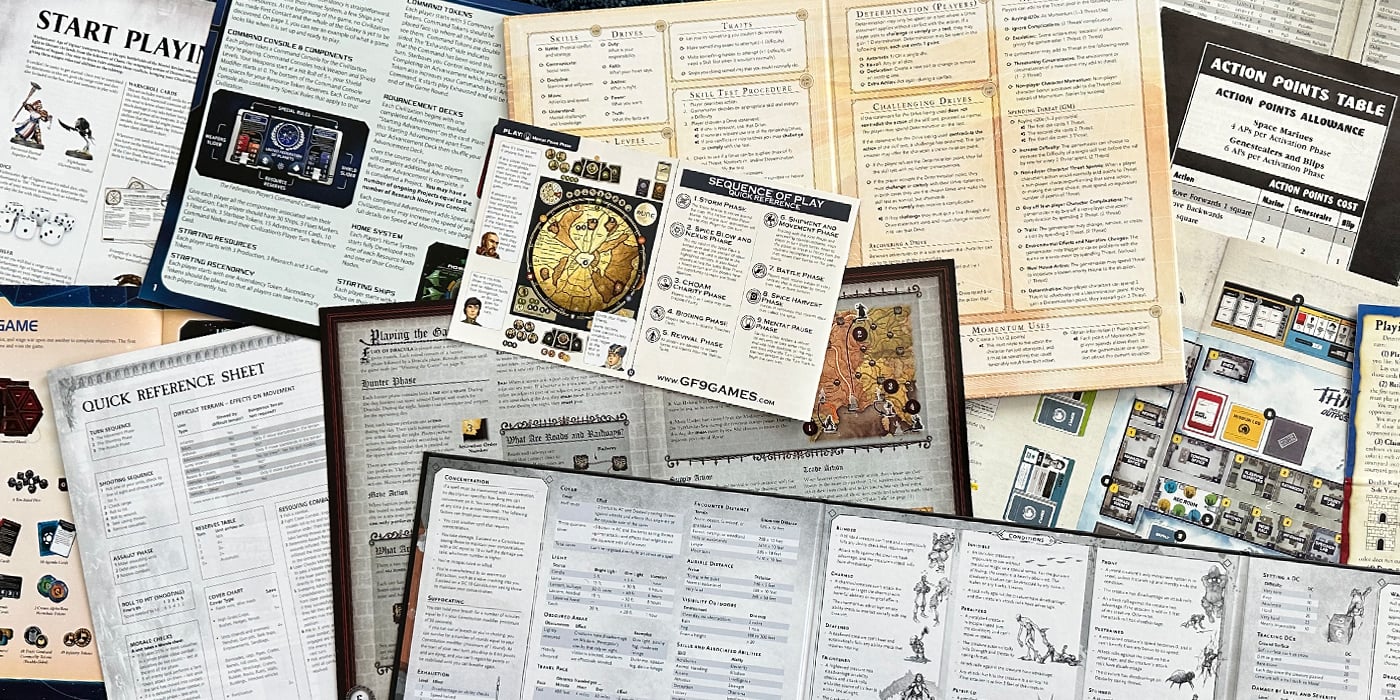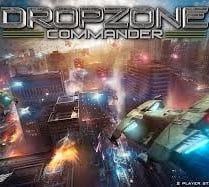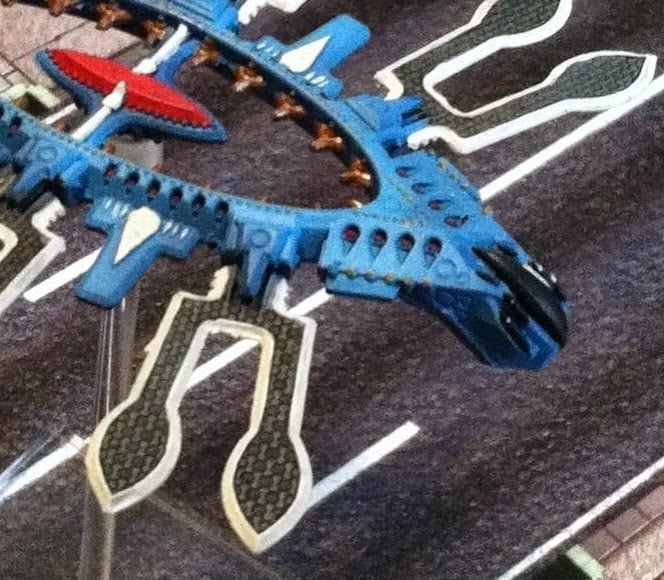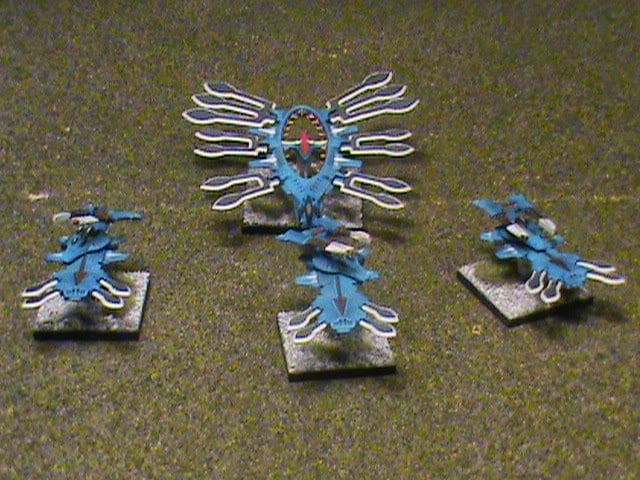Dropzone Commander: List Building 101 – Transports
5 Minute Read
Dec 18 2014

Advertisement
Welcome back, boys and girls! Today we carry forward our look at the principles of list building in the nearish future!
Now that we have a basic understanding of the strategies that drive list building, it is time to break down the components that will make up your force. Transports come first among these essential elements. The most powerful force in the Dropzone world will fall flat on its face without dropships and other transports. It doesn’t matter how powerful your units are if they can’t be in the right place at the right time.
Dropship Basics
The first and possibly most important aspect of dropships is that they cannot later transport another unit. This might seem like a small issue, but when casualties mount and your critical unit is out of position with no dropship you will know exactly what I’m talking about! Maneuverability is everything in Dropzone Commander. Whether it is shut down by destroyed transports or an impenetrable AA blanket is irrelevant; you will struggle to enforce your will on the tabletop without maneuverability.
A dropship’s primary role in the game is to get your units from Point A to Point B. In most scenarios the bulk of your forces will be positioned just off the table, waiting to roll on as the game begins. With the nature of Active Countermeasures, your weapons will generally have a very short range. Add to this an average movement speed of 4”-6”, and you can quickly see how rolling your tanks on from the edge isn’t usually the best idea. With Dropships able to move up to 30”, depending on size, they can quickly net you the movement needed to get into position.
In general, though, dropships have little to no damage output and lack the resiliency to survive incoming fire. They usually have enough Damage Points to survive some initial attention, but a concerted effort will definitely bring them down. Once this happens there is a good chance that entire units on-board will be destroyed, so it is a good idea to keep them protected and away from enemy line of sight until you are ready to drop their contents into the maelstrom.
Like all other units in the game, dropships cost points. As a result they will be taking up the space that could be occupied by more infantry or offensive units. As such, it is important to only take them when necessary, and to get their full mileage once they hit the table.
Picking Up
Scourge tanks, on their way to the frontline.
During the list building process, it is important to visualize how your army will deploy onto the table. What role will the unit fulfill? Does it need to advance and make your offensive presence known, or will it sit in the back and launch damage at buildings? Perhaps it is a fragile Scout unit that needs to maintain line of sight to direct artillery strikes. It is important for purposes of list construction that you consider the function and goals of each unit you select.
Some units simply do not require a transport. The UCM’s Ferrum Drone Base comes to mind. The unit is essentially a mobile land-based aircraft carrier. Its goal is to sit behind terrain and produce drones to assail the enemy. Since the Drones bring their own maneuverability, this means that a Ferrum will only require a Dropship if you have something truly clever in mind.
Perhaps the most important units in regards to transport considerations are your infantry. These models are next to immobile without some means of conveyance, and there are different thought processes that go into moving them about. You can use light dropships to move them more quickly, giving you a quick advantage in reaching the center of the table. The danger here is in the fragility of the light dropships. They have one Damage Point and low armor, which makes them ripe targets for Fast Movers and roving enemy AA platforms. Losing the transport will mean that all the hard work was for naught, leaving your unit stranded (barring some luck with the Command Decks!). Conversely, infantry can also go into ground-based APCs, which then mount up in larger dropships. A significant amount of speed is lost when this course is taken, but the troops inside are generally much safer. Even if the dropship is destroyed, the units can still take to their APCs. The general approach is to mix these two strategies, with slow and resilient troops following after the faster, weaker versions.
Unit size dictates the dropships you can choose from, which also influences strategy. Some players prefer large blocks of tanks, conveyed into combat with bulky, resilient dropships. Other prefer smaller, more agile squadrons that can rove in packs across different areas of the table. Each has its advantages, and it falls to the player to make these selections in list construction. Again, it is important to visualize how your forces will behave during the list building phase.
Dropping Off
An Eden Gate comes in low to bring its charges
into battle.
When deciding which dropships to take, it is also important to consider where their cargo will end up. Heavier dropships can act as juggernauts, pushing into enemy fire to unload their charges. Lighter transports can execute swift flanking maneuvers, preventing the foe from escaping with objectives. It is a good general practice to keep your dropships near their units, so that they can effect a quick dust-off when necessary. Again, you want the right dropship that can perform the job and survive to see its completion.
Be patient in getting the position you need, and wait for the right opportunity to begin the drop. As I’ve mentioned before, I’ve played games where my Shaltari Tarantulas waited to ambush heavy tankers until the fifth turn, not making their drop until the turn before. This is another aspect of visualizing the battle plan before you begin; know that the dropship is sufficient to the task of getting your people where they need to go.
Conclusion
Learning which units need dropships, along with how and when to drop their cargo, can only be learned and refined through playing a few games. You will quickly see which units fit your style, and then you can begin the process of finding the best fit for them in the list. Once you get it ironed out, the process of selecting dropships will almost become rote.
Dropzone veterans! Any advice for our youngbloods in the audience? Leave your thoughts on dropships, unit composition, and timing your drops in the comments below!
For a healthy dose of gaming insanity, visit us at Enter the Maelstrom.
Author: Randall Madden
Advertisement








